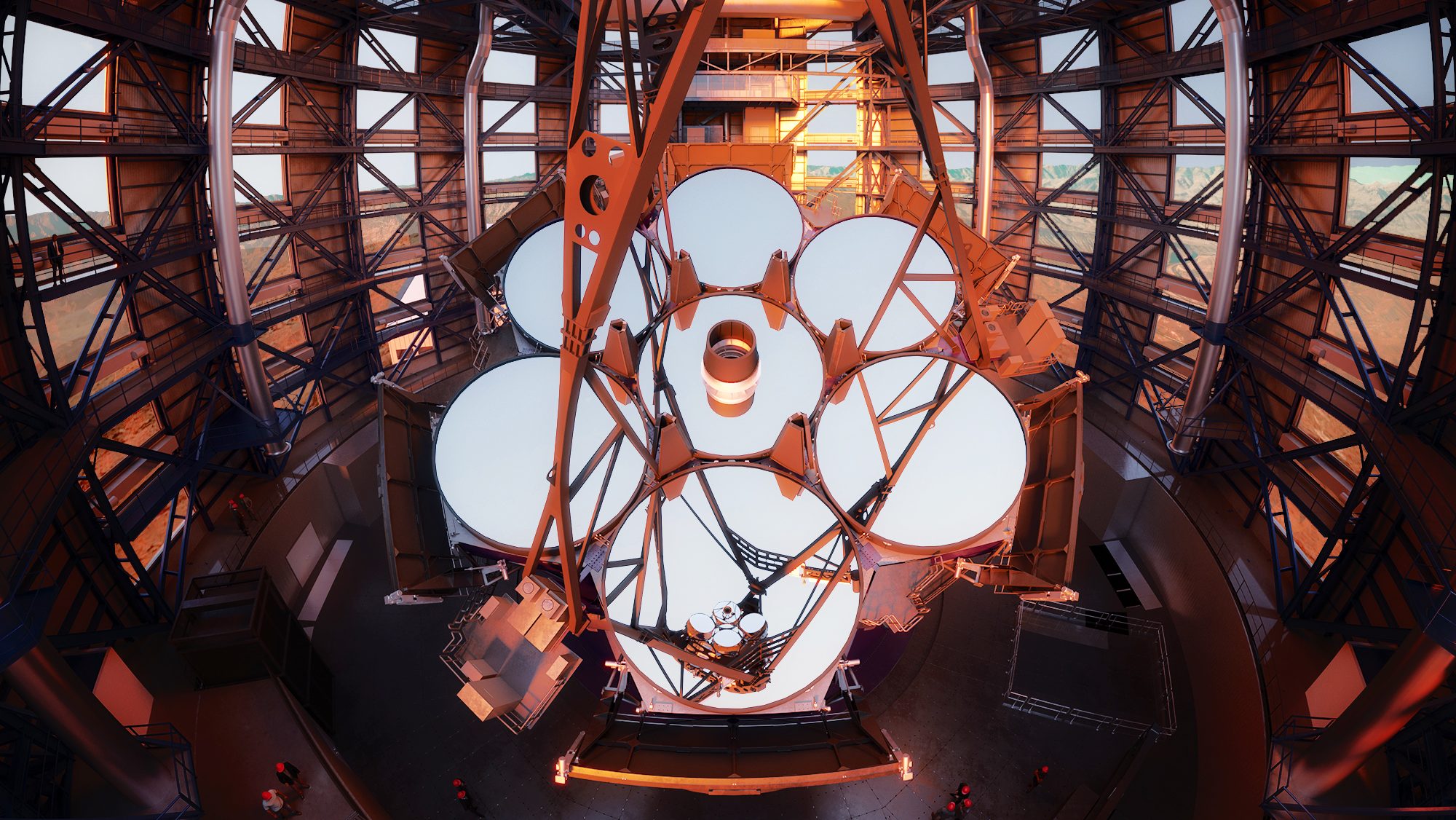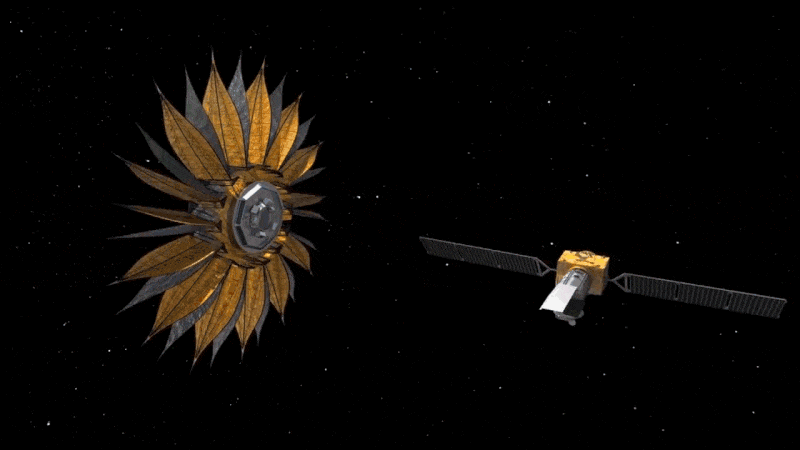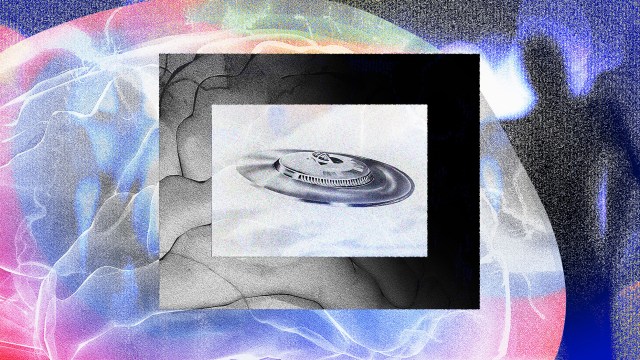Flagship NASA space telescope faces a penny-pinching death

- Back during the 1980s through the early 2000s, NASA planned and launched its original fleet of great observatories: Hubble, Compton, Chandra, and Spitzer.
- Hubble and Chandra are still operating today, reigning supreme as our flagship optical and X-ray observatories, respectively, and still performing world-class, cutting-edge science.
- Shockingly and appallingly, the President's suggested FY2025 budget wants to kill Chandra, based on erroneous reasoning and with no successor mission even planned. Here's what must be done.
On March 11, 2024, the Biden-Harris administration released the President’s budget for the 2025 fiscal year. Despite touting itself as supporting space and climate leadership, it instead seeks to do the unthinkable: to completely kill off NASA’s flagship X-ray observatory, Chandra. Launched in 1999, Chandra will celebrate 25 years in space on July 23 of this year: continuing a long string of NASA missions to monumentally surpass its originally planned mission lifetime. Chandra is the highest-resolution, most sensitive X-ray telescope ever launched, and not only continues to deliver high-impact, cutting-edge results, but has enough fuel left to continue functioning for another decade or more.
X-ray astronomers have been hoping for a new, superior telescope for decades to take us beyond the limitations of Chandra, So why would the President of the United States recommend that NASA “sunset” our current flagship X-ray telescope?
- It’s not because there’s a successor mission being planned.
- It’s not because the telescope is failing.
- It’s not because the telescope has gotten too expensive to support.
- And it’s not because Chandra has already accomplished all of the good science it’s capable of doing.
In fact, the only reasons that the President gave in the budget report are factually untrue, and now it’s up to Congress to correct the mistake. Unless that occurs, humanity will lose our sharpest, highest-resolution views of the X-ray universe prematurely, when instead we should be investing in keeping what we have today and building a better tomorrow. Here’s the full story.
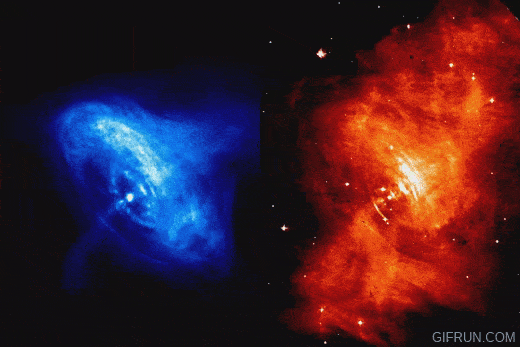
Every wavelength of light encodes a different set of information about the Universe, and if you want to see them all, you need to both build observatories that are sensitive to those particular wavelengths, and place them in a location where they can actually take meaningful observations of the Universe. Earth’s atmosphere may be largely transparent to a little bit of ultraviolet light, most visible light, some near-infrared light, and a lot of radio wavelengths of light. However, it’s opaque to gamma-rays, X-rays, and all of the far-infrared portion of the spectrum. While ground-based astronomy is incredibly useful at wavelengths where the atmosphere is transparent, we can only perform astronomy in space for the completely opaque ones.
Unlike optical telescopes, which use mirrors to reflect and focus light onto the instruments, X-rays are too high in energy and would simply be absorbed by normal mirrored surfaces. To overcome this limitation, Chandra was designed with a series of nested, cylindrically-shaped mirrors coated with heavy metals so that the X-ray light would encounter them at very low grazing angles, enabling those mirrors to reflect and focus between 80-95% of the incoming light onto a tiny, one arc-second wide circle: achieving resolutions that no other X-ray observatory has ever matched. It was launched on July 23, 1999, and was, along with Hubble, Compton, and Spitzer, part of the original quartet of NASA’s Great Observatories.

X-ray astronomy, quite literally, has never been the same. Chandra has shown us aspects of the Universe that most scientists couldn’t have even imagined prior to its launch. Today, we take for granted that supernovae give rise to either neutron stars or black holes, and that when black holes feed, they emit radiation all across the electromagnetic spectrum owing to the matter accelerated and heated around them. We also take for granted that practically all large galaxies contain supermassive black holes at their centers, including our own. But this was not always known, and in fact it was Chandra that provided the strongest, most compelling evidence for all of these current lines of scientific thought and more.
But it isn’t just that Chandra showed us things like:
- the compact objects at the centers of supernova remnants,
- rings around central, newborn pulsars,
- supernova shockwaves,
- gas spiraling into the centers of galaxies,
- outflows and flares from supermassive black holes, including here in our own Milky Way,
- and X-ray emissions from gamma-ray bursts,
it’s that it showed us all of these things (and, again, much more) at unprecedentedly high resolution, that to this day, no other X-ray observatory has matched.

Just like observatories such as Hubble and JWST, Chandra has also imaged significant patches of sky for an extremely long time: a deep field view of the Universe. One such photo, known as the Chandra Deep Field South, used a total of approximately 2000 hours of observing time with Chandra to snap the deepest X-ray view of our Universe ever taken. (The image is shown below.) There wasn’t anything remarkable in this patch of sky: no major galaxies, galaxy clusters, stars within the Milky Way, etc. It was just a mundane, run-of-the-mill area of the sky with no special significance. And yet, from this deep-field image that’s color coded by the energy of the X-rays detected (red for low energy, blue for high-energy), more than 5000 point sources were detected.
This region of space highlighted is merely a quarter of a degree across: encompassing just 0.0006% of the entire sky. By combining this Chandra data with optical data, we could see what astronomers strongly suspected: that the point sources Chandra was detecting were actually active, supermassive black holes at the cores of galaxies. Some of those galaxies, in fact, were so faint and distant that even Hubble couldn’t detect them, so Chandra data actually discovered around 30-40% of these galaxies in the first place. With its exquisite resolution and sensitivity, where even a single X-ray photon is packed with meaning, Chandra continues to show us the Universe like no other observatory has.
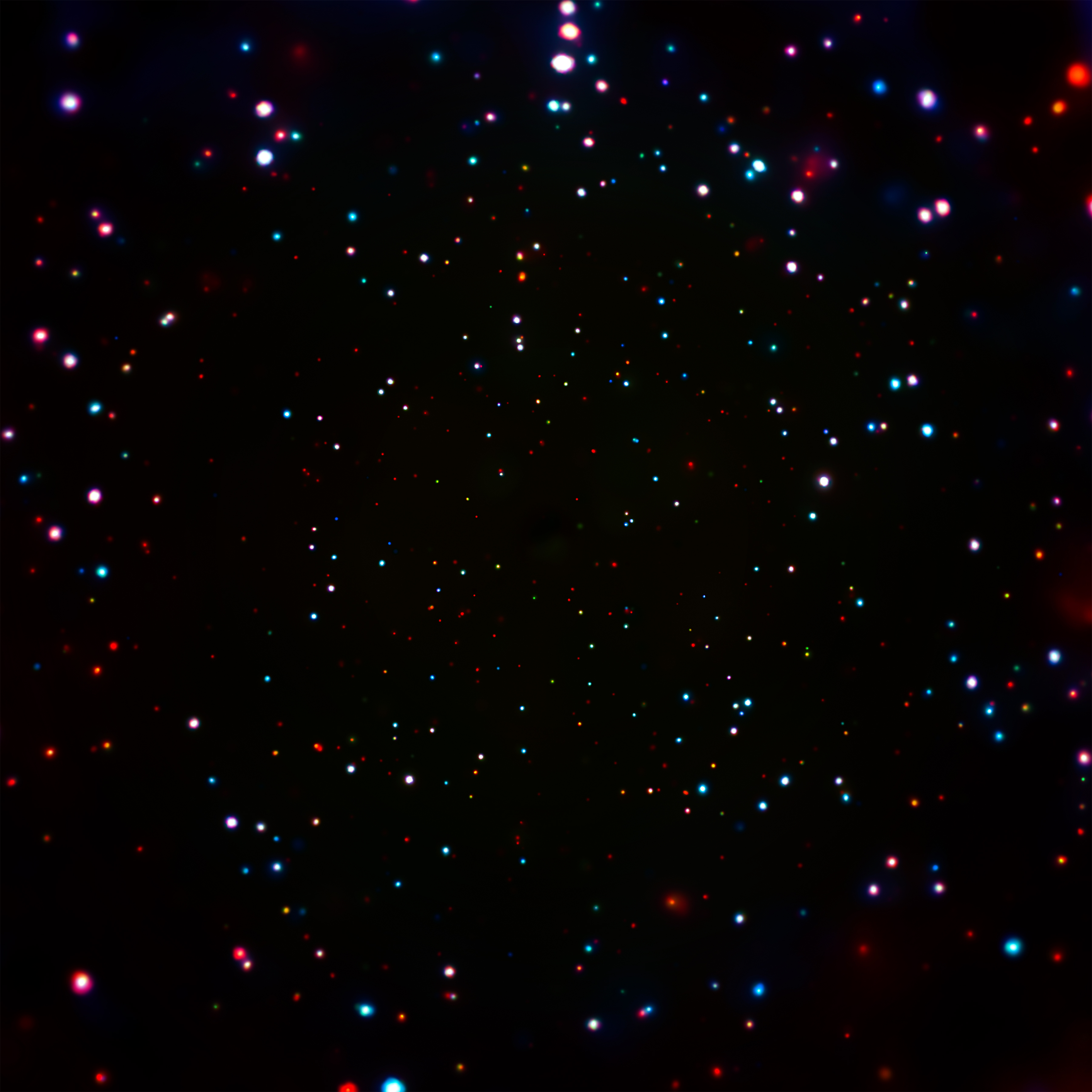
It’s also worth considering just how spectacular the angular resolution of Chandra truly is. Here, for example, is an image of the same object, globular cluster 47 Tucanae, as observed with three different X-ray telescopes: Einstein, ROSAT, and Chandra. This globular cluster is a collection of around a million stars, and yes, there are black holes inside of it as well. Whereas Einstein saw only a blob and ROSAT saw what looks like a series of blobs merging into one another, Chandra has identified more than 300 individual point sources inside this cluster, each of which correspond to an individual black hole.

Consider also the galaxy Messier 51, known as the Whirlpool galaxy, which is actively forming stars along its spiral arms owing to an interaction with a neighboring companion galaxy. If you don’t have outstanding spatial resolution, you’re not going to be able to discern between:
- what are the X-rays coming from the hot, diffuse gas, and
- what are the X-rays coming from point sources, such as X-ray binary systems and active galactic nuclei?
Even contemporary X-ray observatories such as XMM-Newton, launched the same year as NASA’s Chandra, cannot compete in terms of spatial resolution. The difference between what it can see and what Chandra can see is stunning.
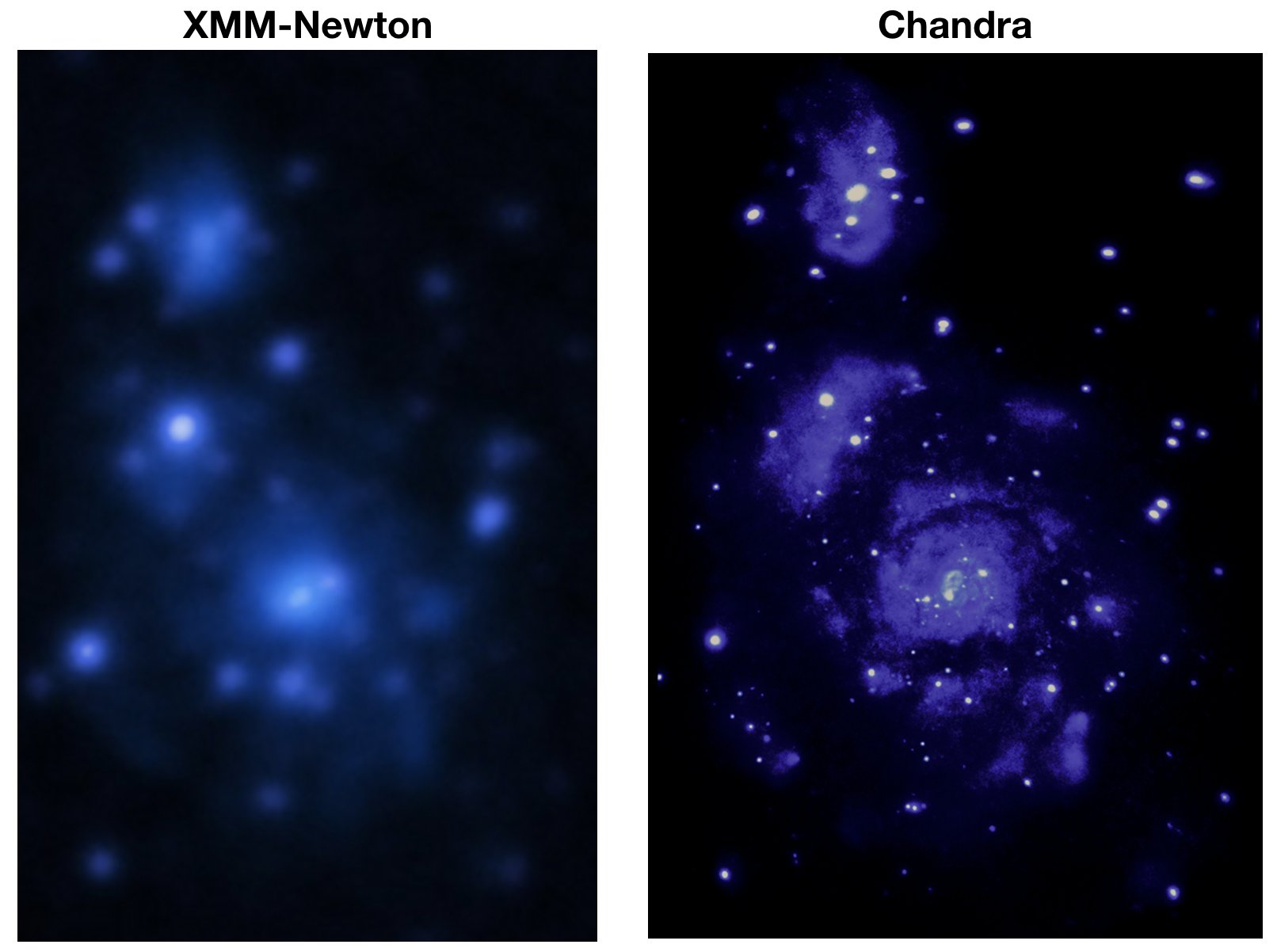
As technology and know-how have improved, astronomers have long sought to build a superior X-ray telescope to teach us even more about the Universe than Chandra has taught us. The areas targeted for improvement are:
- even greater, superior spatial resolution than Chandra,
- a wider, larger-area field-of-view,
- and greater spectral energy resolution, enabling astronomers to know even more precisely what the energy of those X-rays are,
any one of which would be an incredible boon to the enterprise of science, but all three of which would represent a generational leap in capabilities.
The two largest space science organizations in the world, NASA and the ESA, have each proposed one: Lynx from NASA and Athena from ESA. While Athena, as proposed, would have a superior field-of-view, Lynx would have far superior angular resolution, a better calorimeter (determining the energy of each photon), and sensitivity to faint sources. Unfortunately, Athena is being redesigned and downgraded in its scope due to cost-cutting, and Lynx, while still a compelling part of the astronomy and astrophysics roadmap, was not selected as one of the upcoming highest priorities for NASA’s upcoming flagship missions.
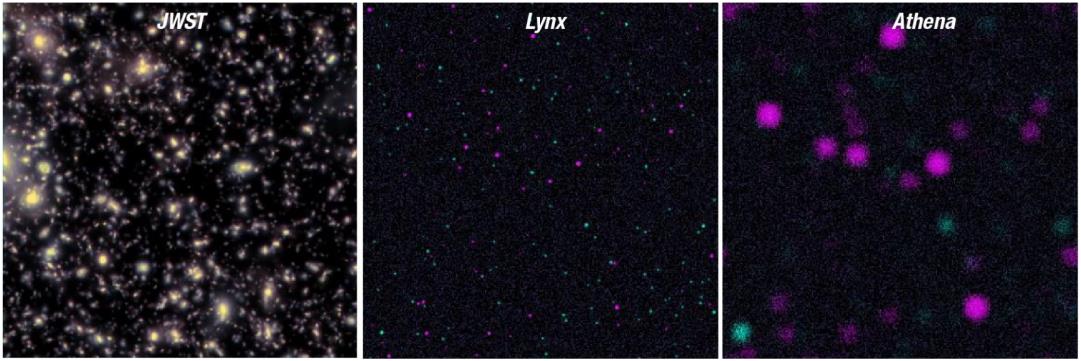
This, alone, was a disappointment for X-ray astronomers. You can take a look across the entire electromagnetic spectrum, from gamma-rays all the way down to radio waves, and ask what seems to be a simple question, “Based on our technical capabilities today versus the most recent flagship observatories we’ve constructed, which wavelength ranges should be given the most attention as far as a next-generation observatory is concerned?”
The answers may surprise you.
- The most underserved community is the far-infrared, which hasn’t seen a high-level observatory since the now-defunct ESA Herschel mission.
- The second most underserved is the X-ray community, which still relies on Chandra as its greatest observatory, where the eROSITA instrument at least offers greater spatial coverage compared to Chandra, although suffers from significantly poorer spatial resolution.
- And the third most underserved is likely a toss-up between the far-ultraviolet and the radio communities, as ultraviolet has only the limited capabilities of Swift and the now-defunct GALEX, while radio is still waiting for the National Science Foundation to adopt the Astro2020 recommendations that it itself chartered and funded, and support the next-generation Very Large Array and potentially replace the horrific loss of Arecibo.
So in addition to far-infrared astronomers being left out in the cold yet again, it would seem that X-ray astronomers are forced to lean even more heavily on Chandra than ever, right?
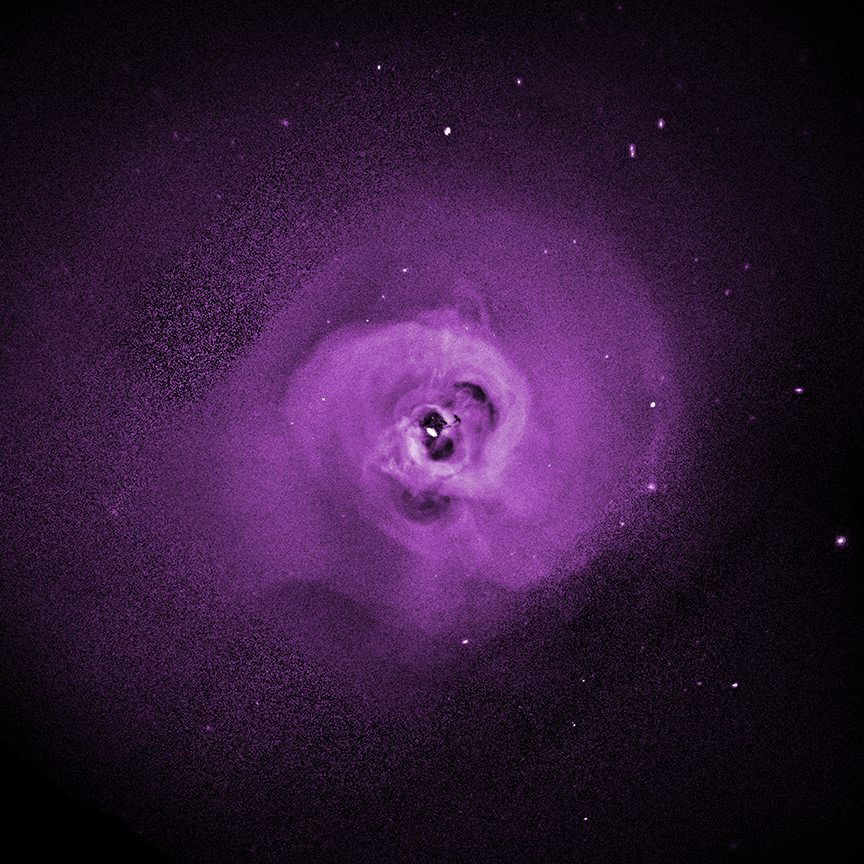
Unfortunately, that may not even be possible. As was written in the President’s FY2025 budget request:
“The [budget] reduction to Chandra will start orderly mission drawdown to minimal operations… The Chandra spacecraft has been degrading over its mission lifetime to the extent that several systems require active management to keep temperatures within acceptable ranges for spacecraft operations. This makes scheduling and the post processing of data more complex, increasing mission management costs beyond what NASA can currently afford.”
Translating that into plain English, “mission drawdown to minimal operations” is a longstanding plan that NASA adopted for Chandra solely in the case of a mission-ending failure. As Patrick Slane — the director of the Chandra X-ray Center — notes, this includes:
- closeout of flight operations,
- final preparation of the data archive and source catalog,
- final documentation of calibration and other products,
- placing software into repositories,
- and producing detailed spacecraft and instrument documentation.
The funding levels provided in the President’s FY2025 budget cannot accommodate the operation of the Chandra science mission; they can only accommodate these decommissioning activities. In other words, the President’s budget request is to kill Chandra, despite the fact that it’s still operating and still producing world-class science.
But what about the rationale given?
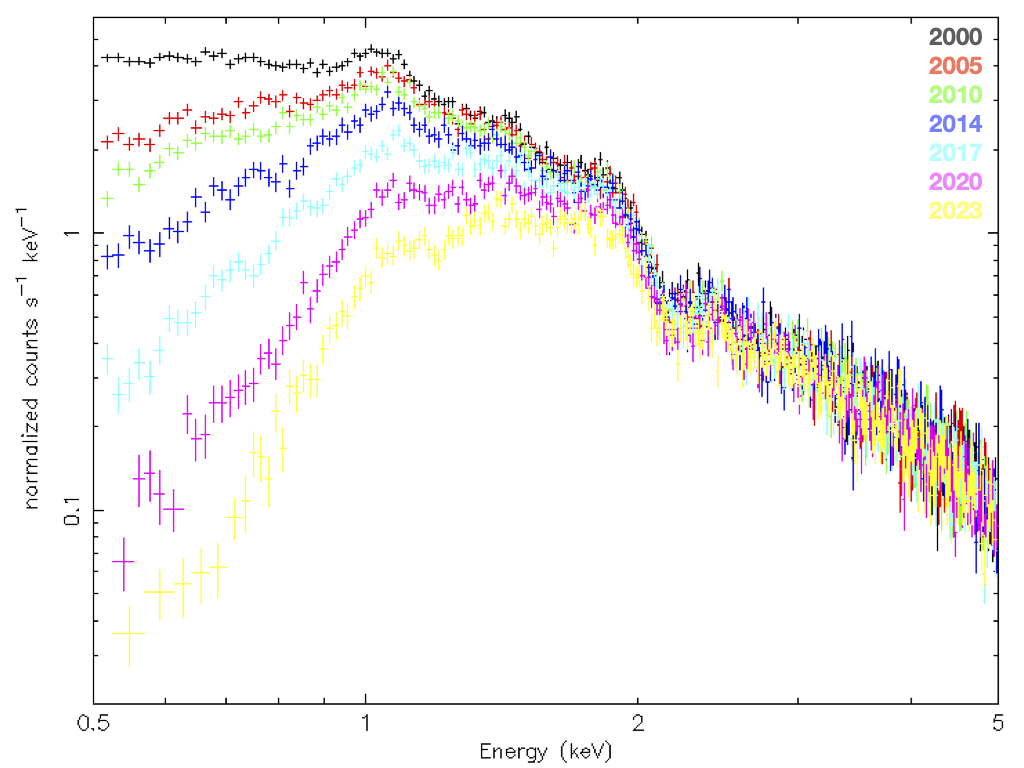
This graph shown above, as you can see, displays the alleged “degradation” of the instruments aboard Chandra. In particular, Chandra has an X-ray imager aboard it called ACIS, which observes across a variety of energies. There has been a slow but steady build-up of contaminants aboard the optical blocking filters which degrade the low-energy performance of Chandra, but do not affect the high-energy performance. As a result, Chandra’s view of the high-energy Universe, arguably its primary science goal, remains just as good as it was on day 1. That’s the major degradation that astronomers speak about when it comes to Chandra, but it still leaves the observatory as the world’s premiere X-ray observatory.
But the argument that “mission management costs” have increased “beyond what NASA can currently afford” is simply non-factual. Again, in Slane’s note to the Chandra community, he states,
“There has been only one instance in which the cost has increased to help manage temperatures. In our Senior Review (“NASA’s highest form of peer review”) in 2022, which resulted in a highly favorable appraisal of Chandra by an independent panel of prestigious scientists, we provided a request for two additional people on our flight team. This was approved and corresponds to about a 1% increase in cost. Every other budget change has been to decrease the staff (by more than 40% over the history of the mission) or to provide occasional modifications to cover either cost-of-living increases or a small increase in [general observer] funding.”
Active management of temperatures does not take place; observing efficiency has not changed appreciably across Chandra’s lifetime; post-processing of data is not more complex now than it was in 1999. All of those statements, made in the President’s budget request, are factually untrue.
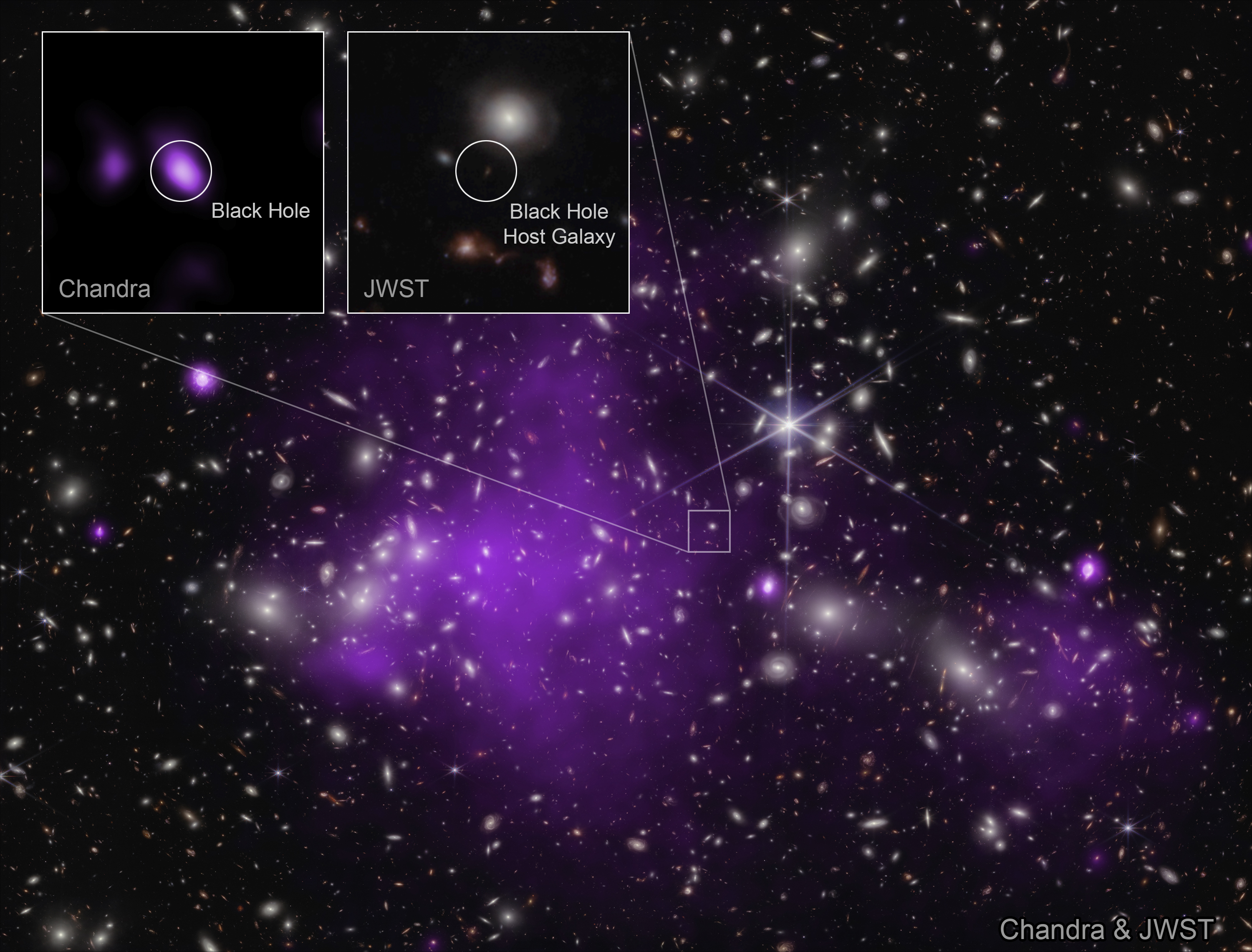
Unfortunately, in politics, truth rarely matters nearly as much as public opinion does. The best hope for saving NASA’s Chandra — our flagship X-ray observatory that, by the way, just discovered the most overmassive black hole ever found in the Universe — is that Congress is persuaded to overrule the President’s poorly thought out and destructive plan through the Appropriations Process. Astronomers have set up the advocacy site SaveChandra.org, in order to help citizens take action, contact their representatives, and get involved and stay informed. But unless Congress acts, and restores the meager $70 million Chandra needs to support it annually, X-ray astronomy runs the risk of being almost entirely eradicated in the United States.
We live in a time where we know more about the Universe than ever before: when even laypersons know how transformative Hubble has been and newly marvel at the riches of the distant cosmos brought to us by JWST. But the search to understand our Universe goes far beyond these pretty pictures, and involves a mix of space-based and ground-based astronomy and astrophysics all across the electromagnetic spectrum and even beyond it: to cosmic particles and gravitational waves as well. With the National Science Foundation threatening to eliminate our most ambitious ground-based astronomy projects and NASA threatening to cut its investment in space-based astrophysics, we must invest in the future today. Once a nation abandons its commitment to basic science, it almost never gets it back.
